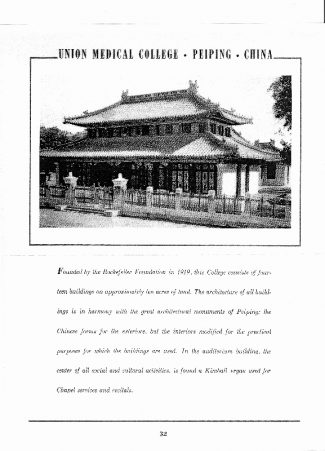PEK1920
| Census ID | PEK1920 |
|---|---|
| Location | Beijing, Peking Union Medical College, Auditorium |
| Builder | Kimball; restored by Casavant and JL Weiler, 2023 |
| Specs | II/23 + Ped + traps/accessories. |
| Action | Electro-pneumatic, with automatic reproducer (reproducer not replaced in 2023 restoration) |
| Note: | One of three pipe organs found partially in situ by the Project between 1989 and 2017. |
The Peking Union Medical College (PUMC) was founded in 1906. Initially a missionary endeavor, in 1915 the China Medical Board was established with a grant of eight million dollars by the Rockefeller Foundation, and in 1917 it assumed control of the school. On the south side of Santiao Hutong, across from the main campus, an auditorium was constructed, intended not only for use by the college but also provided a modern, public hall in a city where civic facilities were non-existent in 1920. Since the Auditorium was to be used as a cinema on certain evenings, and for religious services, John D. Rockefeller paid personally for a pipe organ to be installed. This remarkable instrument (PEK1920) was no ordinary organ: it was an up-to-date theater organ built by Kimball in Chicago, with a reproducer for automatic roll playing.
The Auditorium (which still stands, though modified) was opened in a splendid ceremony on 19 September 1921, attended by Rockefeller himself. On 18 October, the first ecumenical service in the Auditorium was held in the morning, and “in the evening a new era began in Peking life with a recital on the college organ.” The performer is unknown, but was probably Vergil F. Bradfield (1895-1953).
PEK1920 is installed in a chamber at the north-east corner of the Auditorium, and was part of the original design for the building. It speaks through a grille, behind which sit the swell shutters. The console and reproducer were located at the foot of the Auditorium, and the blower was placed in a space underneath the organ chamber, accessible only by crawling through a long, narrow passageway which was entered from a corridor under the stage. For the chapel on the second floor directly above the organ chamber, a set of louvers opened in the ceiling of the chamber so that the organ could be heard rising through the floor to the upper story.
In 2021-2023, the organ was restored by Casavant and JL Weiler. A new (though vintage) console was provided to replace the lost console. As a consequence of this, some of the stop names have changed from what is noted on the relay boxes, and a few features of the original instrument seem not to have been included (the reproducer of 1920 was also not replaced.) A rededication concert was held on 7 April 2023, with organist Shen Yuan of CCOM. Organ works by Bach, Mendelssohn, Wagner, and Elgar were played.
The specs below are of the restored 2023 organ (the specs in Keys to the Kingdom were based on data obtained by The Project when the organ chamber was inspected in 2009 and 2010.) An (*) indicates a stop by extension.
| Great (CC to c3) |
Open Diapason 16′ Claribel Flute 8′ Muted Violin 8′ Forest Flute 4′ Flautino 2′ Tuba Horn 8′ |
| Swell |
*Bourdon 16′ *Melodia 8′ Violin 8′ Vox Celeste 8′ *Fifth 5 1/3′ *Traverse Flute 4′ *Nazard 2 2/3′ *Piccolo 2′ *Tierce 1 3/5′ *Fife 1′ Clarinet 8′ *Orchestral Oboe (Violin+Nazard) Vox humana 8′ |
| Pedal (CC to g1) |
*Acoustic bass 32′ *Bourdon 16′ *Flute 8′ *Flute 4′ |
| Traps |
Harp 8′ (GT/SW) Chimes 8′ (GT) Snare Drum Tap (GT) Snare Drum Roll (GT/SW) Tambourine (GT/SW) Castanets (GT/SW) Chinese Block (GT/SW) Tom-Tom (GT/SW) Triangle (Ped.) Gong (Tam-Tam) (Ped.) Birds (Ped.) Bass Drum Ped.) Timpani (Ped.) Cymbal (Ped.) |
| Couplers | GT/GT 16′, Gt/GT 4′, SW/GT 16′, SW/GT 8′, SW/GT 4′, GT Unison Off; SW/SW 16′, SW/SW 4′, Swell Unison Off; GT/Ped. 8′, GT/Ped. 4′, SW Ped. 8′, SW/Ped. 4′. |
| Accessories |
Tremolo (SW, affects entire organ), Vox Vibrato (SW), 5 General combinations, 5 combinations for GT and SW, 3 combinations for Ped. Toe levers for Chimes Soft, Chimes Dampers, Harp Dampers, GT/Ped. reversible, Sforzando. Swell pedal (six stages) and Crescendo pedal (affects entire organ); originally had a 3HP blower, serial number: 10890; 8” wind |
There is a brief mention of the organ in the searchable database of the Theater Organ Website (http://barton.theatreorgans.com/s.htm.) The original organ console had a second touch system.
The PUMC Kimball is one of only three pipe organs located by the Project in situ in China between 1989 and 2017. Of particular historical interest, this is the organ which accompanied (on 18 March 1925) the funeral of the father of modern China, Sun Yatsen, probably using the reproducing roll player.
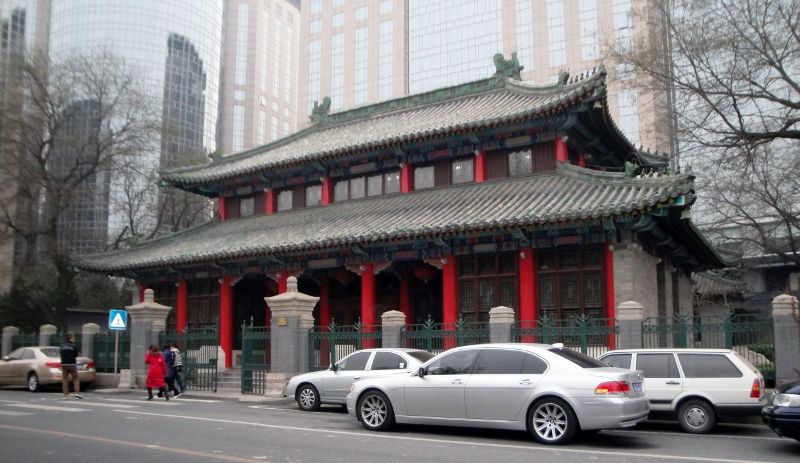
PUMC Auditiorium, 2010.
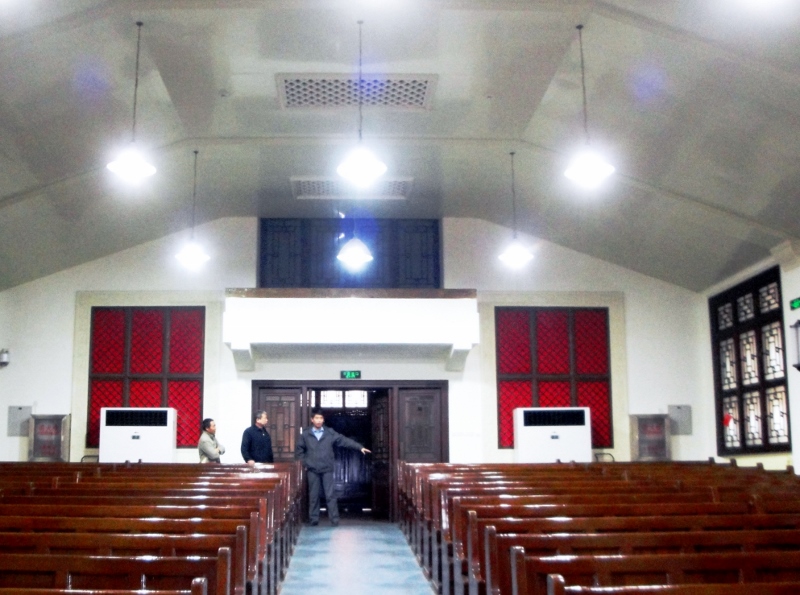
Interior of the Auditorium, 2009. The organ chamber is behind the red grille on the right.
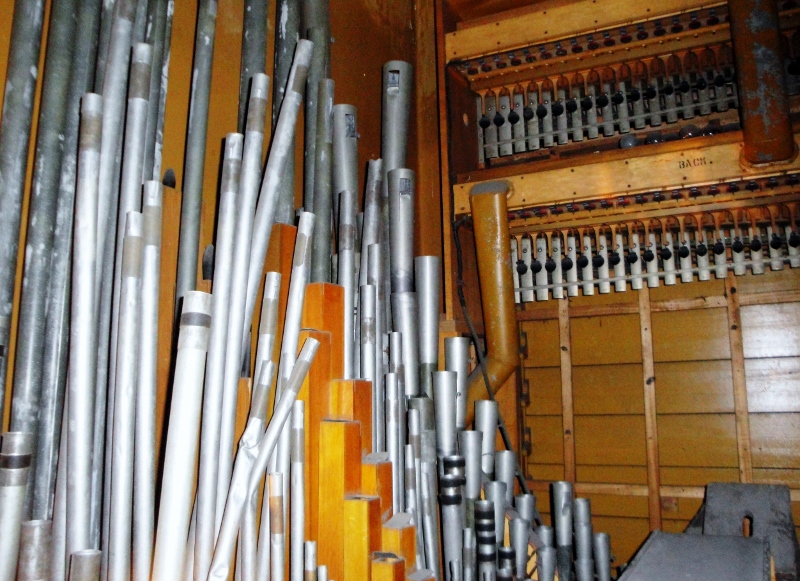
Organ chamber of PEK1920, 2009.
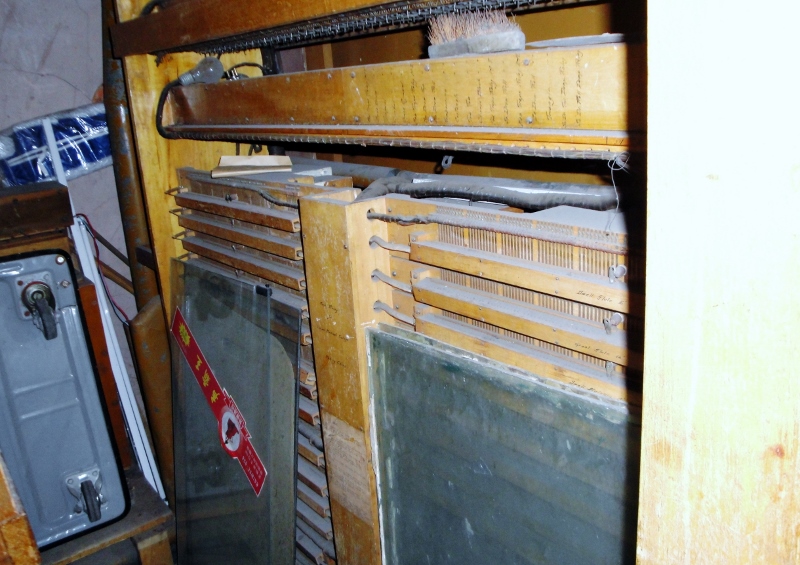
Relay boxes, PEK1920, 2009

Traps, PEK1920, 2009.
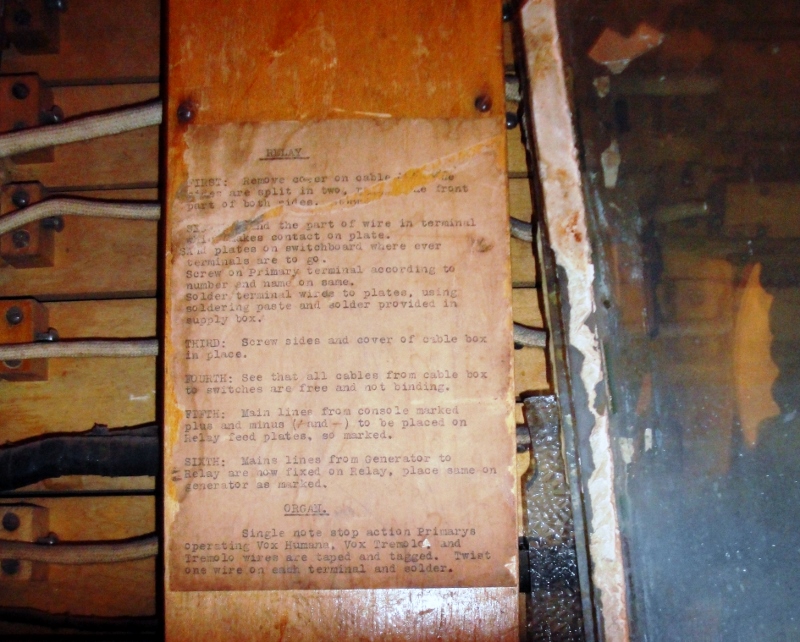
Kimball installation instructions, PEK1920, 2010.
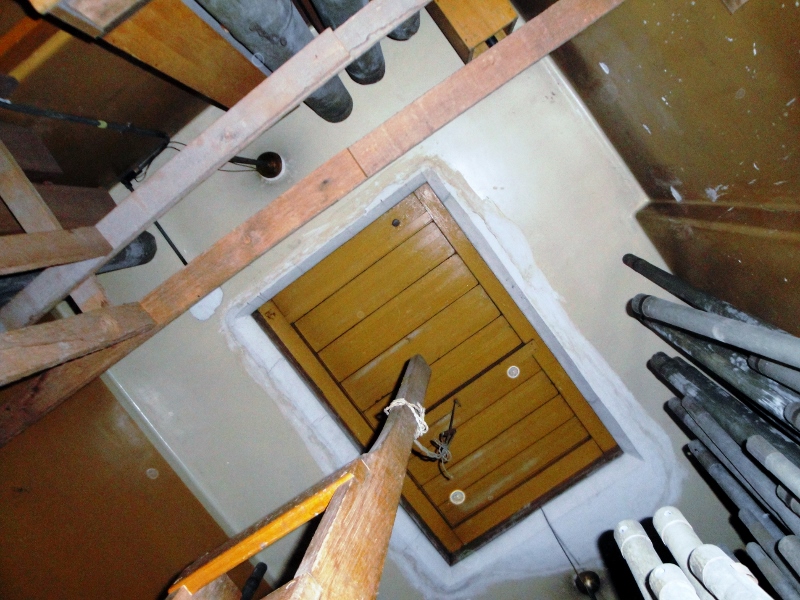
Louvers in the ceiling, beneath the former chapel, 2010.
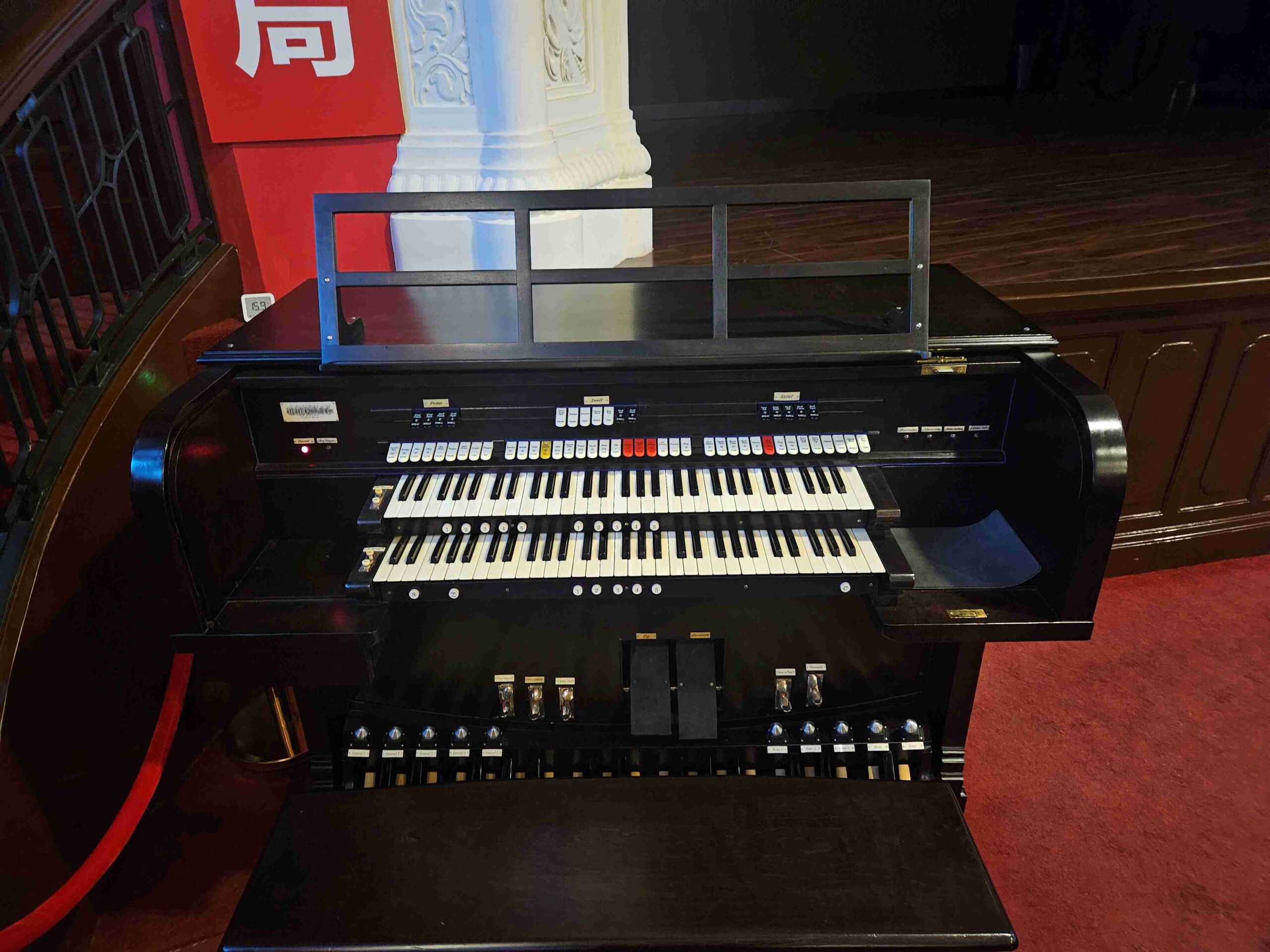
PEK1920: the new vintage stopkey console (Photo from JL Weiler)
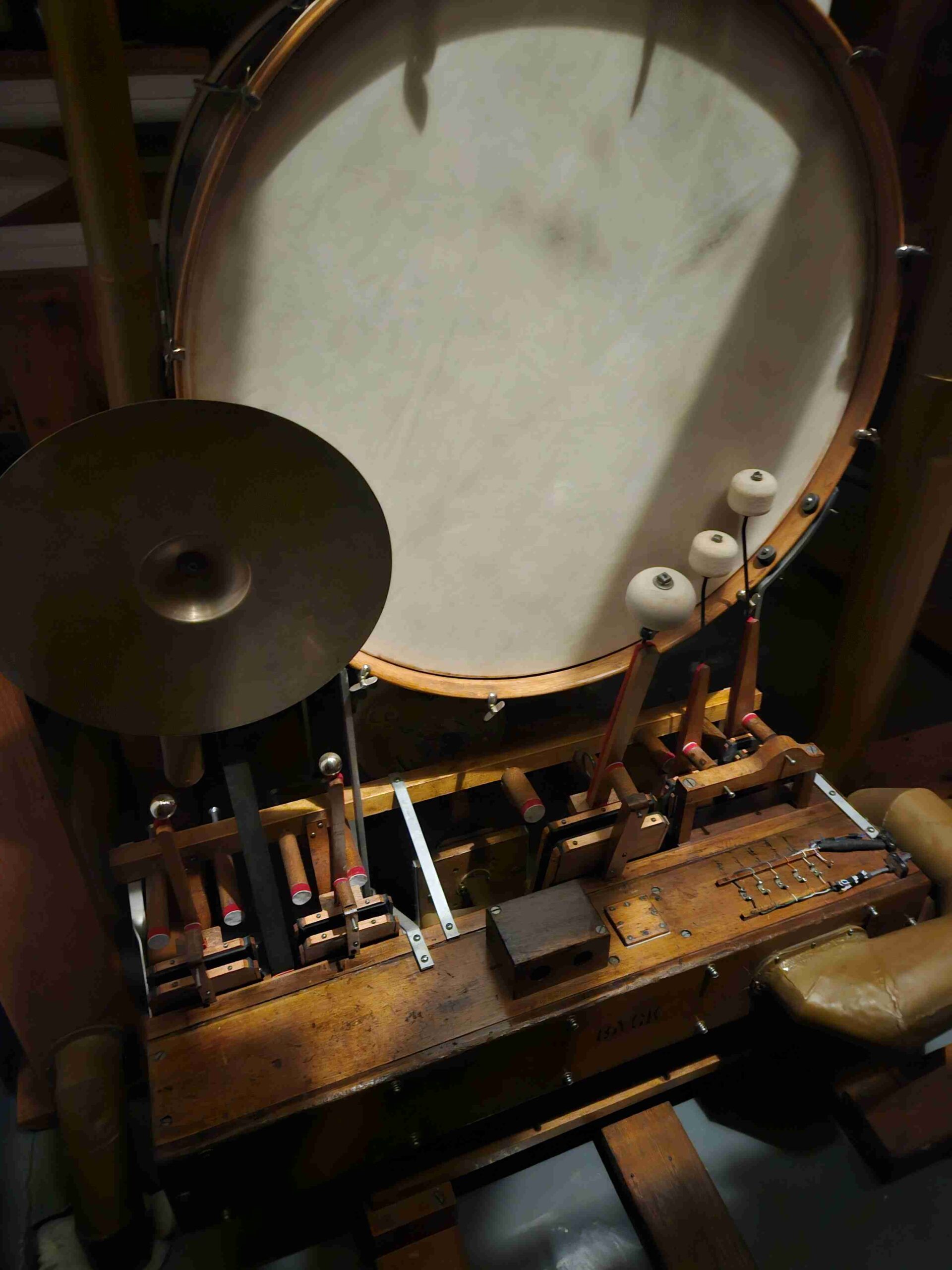
Restored percussion traps (Photo from JL Weiler)
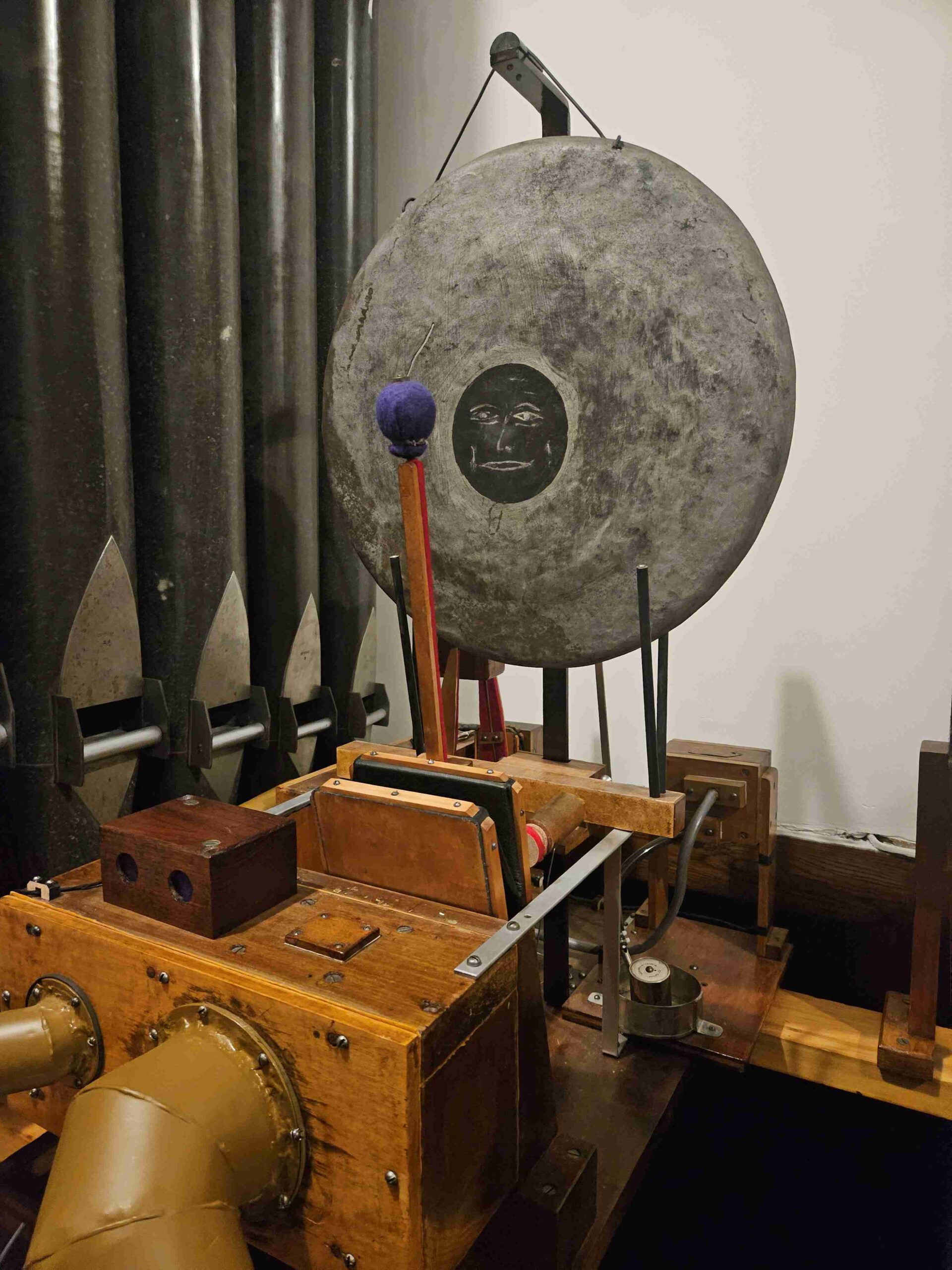
Restored Tam-tam (Photo from JK Weiler)
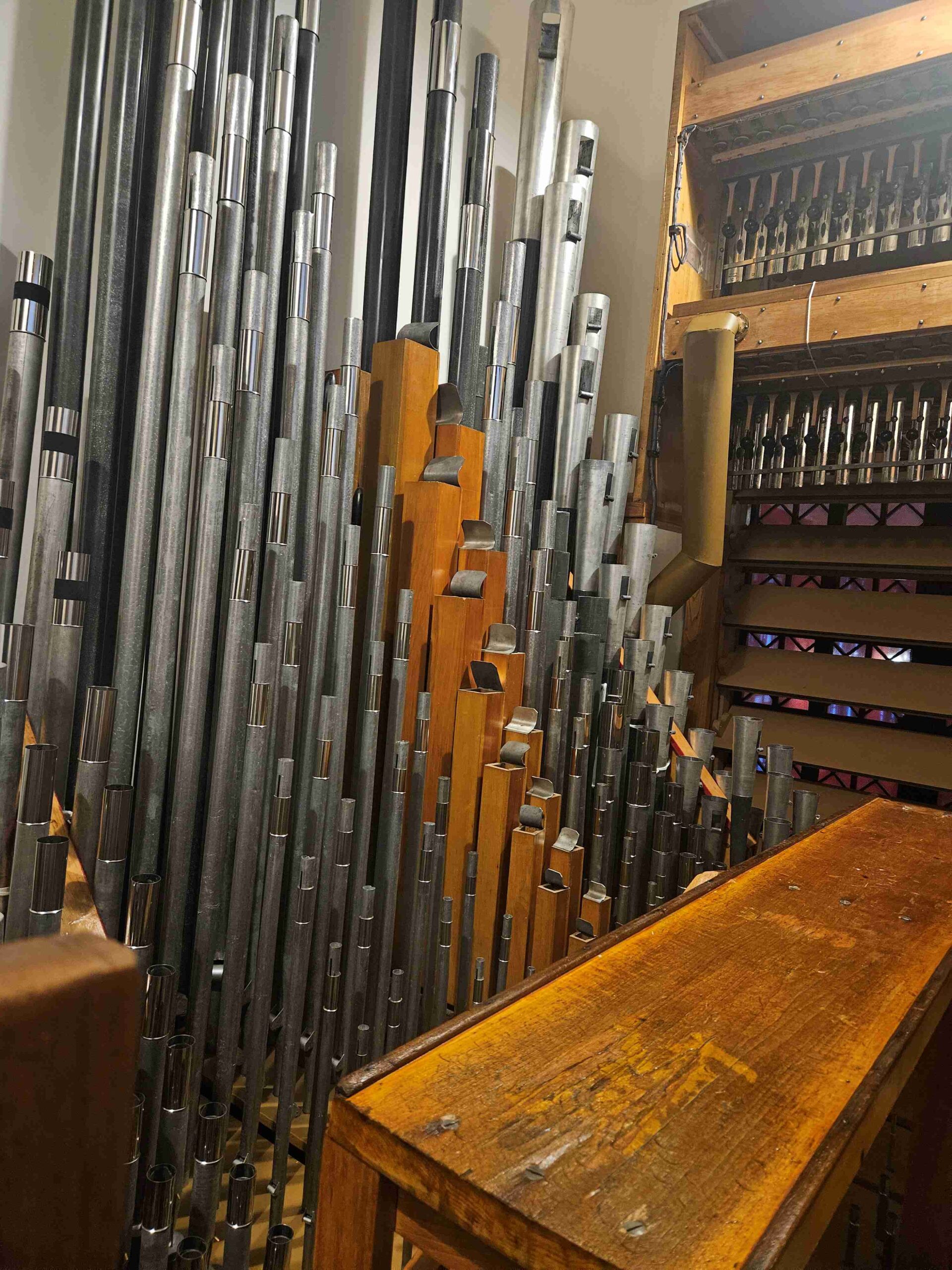
Looking towards the auditorium, which can be seen through the louvers.
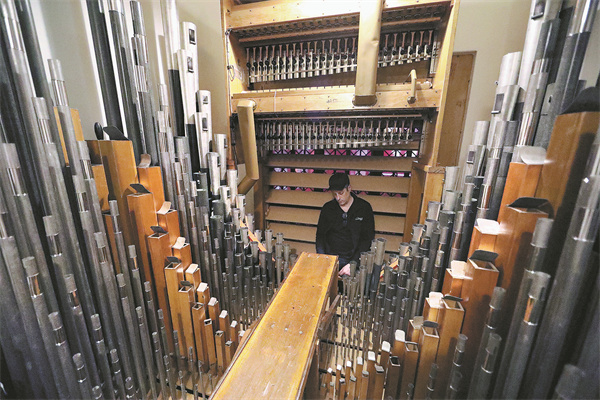
Work on the north soundboard, 2023 (photo from China Daily)
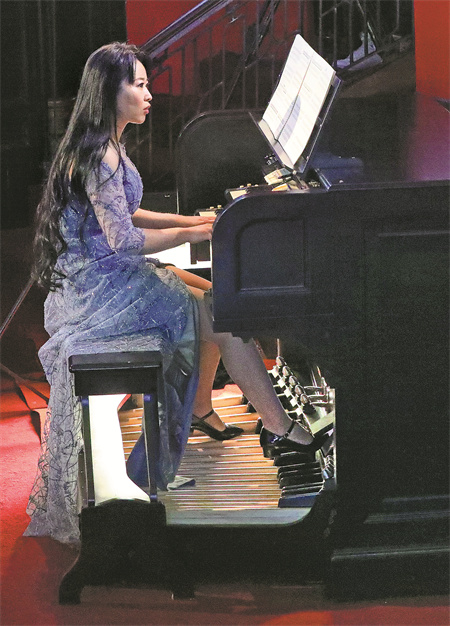
Organist Shen Yuan of CCOM, at the new (vintage) console of PEK1920, 2023. (Photo from China Daily.)
